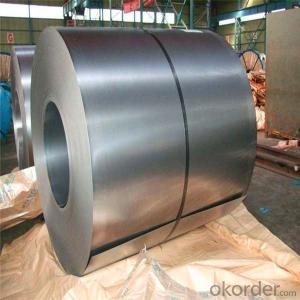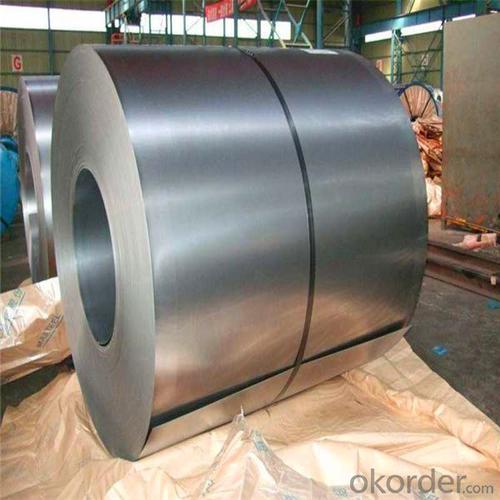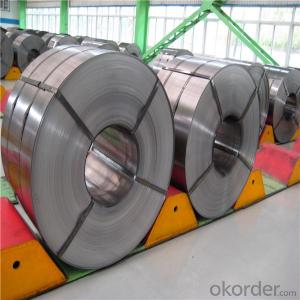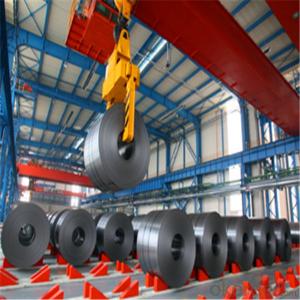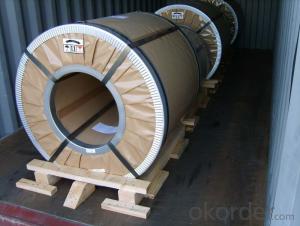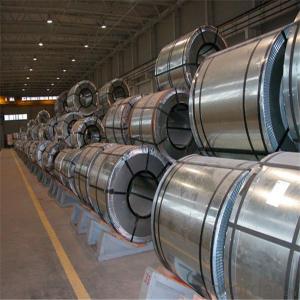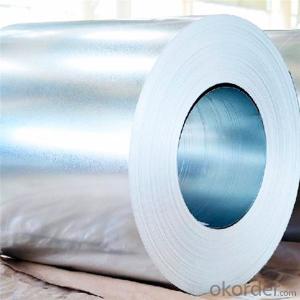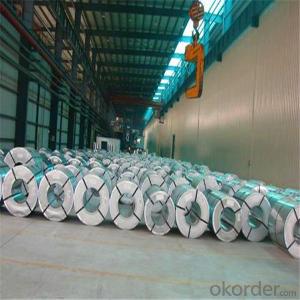SPCC Prime Cold Rolled Steel Coil/Made in China
- Loading Port:
- China main port
- Payment Terms:
- TT OR LC
- Min Order Qty:
- 20 m.t.
- Supply Capability:
- 10000 m.t./month
OKorder Service Pledge
OKorder Financial Service
You Might Also Like
Specification
SPCC Cold Rolled Steel coil
Specification
Cold Rolled Full Hard Steel Coil
Main Qualtiy Standard | JIS G3141, GB11253 |
Mill Type | two stand CVC 6-high reversing mill from German SMS Demag; single stand 6-high reversing mill from Japanese Mitsubishi Hitachi |
Surface Type | glaze |
Inner Diameter | φ 610mm |
Outer Diameter | φ 1,200mm upto 2,050mm |
Weight per Coil | max 28,000kg |
Capacity | CCM 500,000 tons/year, RCM 20,000 tons/year |
Rolling Force | CCM 18,000KN, RCM 14,700KN |
Rolling Speed | max 1,200m/min |
Specification | 0.25mm upto 1.2mm ×900mm upto 1265mm |
Packing | export standard packaging;horizontal packaging |
Inner Diameter | φ 508mm |
Cold Rolled Annealed Steel Coil
Main Quality Standard | JIS3141, EN10130, DIN1623, ASTM A1008/1008M GB5213 |
Annealing Type | 20 hydrogen annealing furnaces from Austria EBNER |
Specification | 0.25mm upto 1.2mm ×900mm upto 1265mm |
Weight | max 10,000kg |
Yield Strength | 100 Mpa upto 280 Mpa |
Products inside Diameter | φ508mm or φ610mm |
Outer Diameter | max φ2,050mm |
Packing | export standard packaging; horizontal packaging |
Capacity | 300,000 tons/year |
Quality Control
With strict observation of lean management requirement,the company strictly examines and tests all processs.Each link from raw material supply to R&D and production and quality test of finished product all abide strictly execute ISO Quality Management System Standard.
Product Image
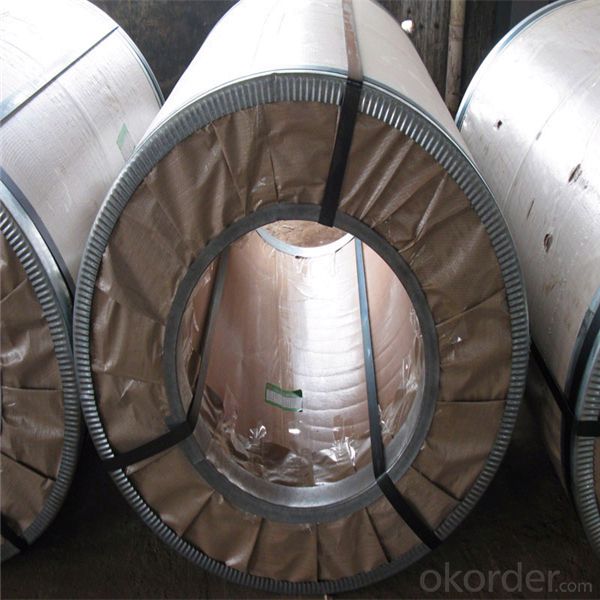
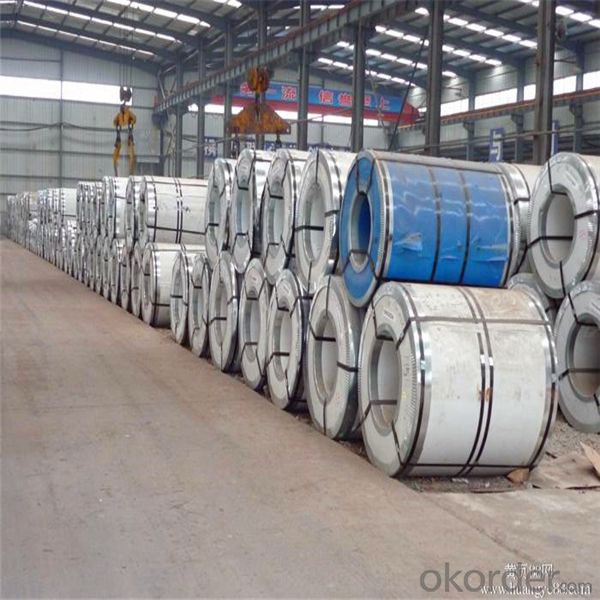
- Q: Hello,I have been thinking about buying a Tungsten Carbide Diamond wedding band for my husband but one of my family members keep telling me that Tungsten Carbide is merely steel and hence, a low quality metal, therefore, I shouldn't buy it. I don't really know much about it. Please if anyone can tell me more about this metal? Thanks.
- Tungsten is not steel. Tungsten is a chemical element. What they do is add an alloy mixture to tungsten and it turns into Tungsten Carbide. You want to find a ring with a nickel alloy, some manufacturers cheap out and add cobalt instead. Make sure the ring you buy does not contain cobalt. Steel is an alloy consisting mostly of iron, with a carbon.
- Q: How are steel coils inspected for dimensional accuracy after processing?
- Steel coils are inspected for dimensional accuracy after processing using various techniques such as laser scanning, ultrasonic testing, and manual measurements. These methods ensure that the coils meet the required specifications and tolerances, guaranteeing their quality and suitability for further use.
- Q: Hi all.I'm working on a project which requires about 3 steel pipes at 25mm in diametre and about a foot each in length.The qualities I need with the steel is that:1. I need it to be easy enough to weld together2. I need to be able to drill holes through them with a basic drill (I could buy different bits, that's fine)3. I need the steel to be able to take short intense repeated bursts of strain through said holes4. The lighter the steel the better5. Could I please have a ballpark figure for price. I can't imagine such a small amount of steel would cost too muchThank you in advance for your replyRegardsSean
- Call the steel pipe company or check their website
- Q: How are steel coils used in the manufacturing of automotive frames?
- Steel coils are used in the manufacturing of automotive frames by being processed into flat sheets, which are then cut and formed into the desired shape and size to create the frame components. These components are then welded together to form the strong and durable structure of the automotive frame.
- Q: i got a strip of steel from lowes how to sharpen it its not that thick its kinda slim but its heavyish its around 4'2 feet tall i cant get a whetstone or anything elsei have a brick , sand paper , and a hammer and some charcoal i was heating it up and trying to pound a edge into italso how to cut the steel to make a pointy curved tip any help appreciated and please tell me easy methodsplus its not sharp at all
- The okorder /
- Q: What are the different types of steel coil finishes?
- There are several different types of steel coil finishes, including mill finish, galvanized finish, painted finish, and stainless steel finish.
- Q: Can steel coils be coated with anti-tampering materials?
- Yes, steel coils can be coated with anti-tampering materials. These materials provide an additional layer of protection against tampering and unauthorized access to the steel coils.
- Q: What are the different methods of coil slitting for steel coils?
- There are several different methods of coil slitting for steel coils, each of which serves a specific purpose and is used in different industries. Here are some of the common methods: 1. Rotary shear slitting: This is the most widely used method for coil slitting. It involves using a set of rotating knives to cut the steel coil into smaller strips. The rotary shear slitting method is known for its high speed and accuracy, making it ideal for large-scale production. 2. Loop slitting: In this method, the steel coil is fed through a loop control system that maintains a constant tension. The coil is then cut into strips using a rotating knife. Loop slitting is commonly used for thinner gauge materials and is known for its ability to produce clean, burr-free edges. 3. Oscillating shear slitting: This method involves using a set of oscillating knives to cut the steel coil. The knives move back and forth in a rapid motion, creating a shearing effect that cuts through the coil. Oscillating shear slitting is often used for thicker gauge materials and can handle higher tensile strengths. 4. Crush cut slitting: Crush cut slitting is a method where the steel coil is cut by pressing a circular blade against the coil. The blade crushes the material, creating a cut. This method is commonly used for softer materials or when edge quality is not critical. 5. Slit edge rolling: Slit edge rolling is a method that involves rolling the edges of the steel coil after it has been slit. This process smooths out the edges and improves the overall appearance of the strips. Slit edge rolling is often used for applications that require a high-quality finish. 6. Laser slitting: Laser slitting is a newer method that uses a laser beam to cut through the steel coil. This method is precise and can handle a wide range of thicknesses. Laser slitting is commonly used for high-precision applications where edge quality is critical. These are just a few of the different methods of coil slitting for steel coils. The choice of method depends on factors such as the thickness and tensile strength of the material, the required edge quality, and the intended application of the slitted strips.
- Q: What are the different types of steel coil surface treatments?
- The different types of steel coil surface treatments include hot-dip galvanizing, electro-galvanizing, organic coating, and pickling and oiling.
- Q: Specifically, for the main support beam found in a basement.
- Talk to the supplier of both the products on what is involved in installation, weight bearing over the span you are trying to go without supports,the size of beam, will it affect the height of the room below or will the floor have to go up and the cost how much are you prepared to spend, you will then get your answer
Send your message to us
SPCC Prime Cold Rolled Steel Coil/Made in China
- Loading Port:
- China main port
- Payment Terms:
- TT OR LC
- Min Order Qty:
- 20 m.t.
- Supply Capability:
- 10000 m.t./month
OKorder Service Pledge
OKorder Financial Service
Similar products
Hot products
Hot Searches
Related keywords
